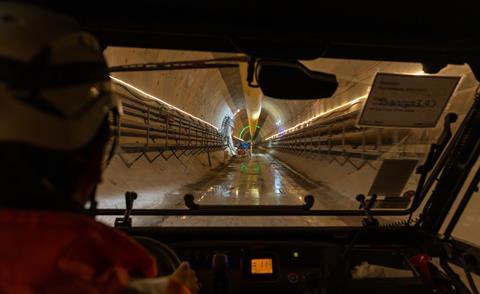Collaboration is about getting on better day-to-day, integration goes far beyond, writes Tony Gates, managing director for infrastructure at Sir Robert McAlpine
There is a lot of work to be done in infrastructure. Despite some of the recent headlines, the government is still investing significant sums in long-term projects up and down the country.
One area of focus is renewable energy. With an ambition to achieve carbon neutrality by 2050, the government has recognised the monumental role infrastructure will play in making this aim a reality. “Infrastructure”, in the words of one MP, “is the key that will unlock net zero”.

The result is that the government has committed to significantly expanding the country’s nuclear generation capacity, with a long-term ambition of generating more than 24 gigawatts of nuclear power by 2050.
Put another way, up to eight new nuclear power plants could be built along with many smaller modular power plants.
Developing the necessary renewable energy infrastructure evidently presents a challenge of enormous scale.
The size of the spend and time-scale of the projects – representing both billions of pounds and decades respectively – match the extent of the problem.
These are not three-year commitments, but rather, in some cases, decades-long projects that will require a long-term vision and significant cooperation and investment.
In addition to delivering these huge projects, the wider construction sector will also face the twin challenges of reducing its carbon emissions and driving the adoption of new technologies.

This is a challenge from within and from without. If, as an industry, we continue working in our siloed, fragmented way, adopting the kind of transactional, non-collaborative mindset that presently besets many projects, we will struggle not only to deliver the projects efficiently, but also to take the vital steps towards carbon reduction and increased digitisation.
“It is one thing to call for more collaboration, but what the sector truly needs is more integration.”
In other words, by investing significant sums in infrastructure, the government has presented us with an opportunity – throwing down the digital and green gauntlet, as it were – that can only be seized if we change how we work.
But if we want to address long-term problems, we need long-term solutions, and that starts by working to foster productive relationships with clients and the supply chain alike. And the solution lies in Integrated Project Teams (IPTs) and High-Performing Enterprises.
Integration, not simply collaboration
It is one thing to call for more collaboration, but what the sector truly needs is more integration. After all, if collaboration is about getting on better day-to-day, integration goes far beyond, ensuring seamless and long-term co-operation on everything from processes through to reporting.
Experience suggests that IPTs, which see all parties on a project involved at the outset and before shovels have broken ground, can really drive the kind of innovation and efficiency needed to realise the government’s ambitions.

It’s not the case that too many cooks spoil the broth, but quite the opposite. Forming teams early brings greater scope for innovations to be applied early on in a project, as opposed to after designs have been confirmed and plans set.
The infrastructure sector is beginning to transform how it works, with, for instance, the recent publication of construction playbooks, both for the public and private sectors.
In 2018, the Infrastructure Client Group launched Project 13 as a new delivery model, and I am privileged to chair the supplier engagement community.
Promoting outcomes rather than outputs – setting targets at the outset of a project to cut carbon emissions by a set amount, for instance – Project 13 exists to truly encourage the use of IPTs and drive them forward to become High Performing Enterprises.
“The long-term vision and relationship building that is needed for infrastructure projects is a natural way of working for us.”
More and more enlightened clients are adopting these principles, both in the UK and abroad, and some are already years into their journey.
The next step on Sir Robert McAlpine’s infrastructure journey
Recognising that every scheme is different and starts from a different position, Project 13 has developed three stages of maturity to reflect the extent of integration on a project.
Those at the earliest stage will have achieved simple collaboration, whereas those a little more advanced will have integrated functions and relationships.

The ultimate ambition, though, is to become a High Performing Enterprise, something Sellafield has explicitly set up to achieve in its Programme and Project Partners (PPP) framework.
We were delighted to join the PPP as a key delivery partner recently, on a 17-year framework worth £1bn to supply groundworks and concrete structures.

The PPP commits to seamless supply chain cooperation and investment in the local area. This reflects perfectly our next strategic step as a business, which will see us focus on areas where we excel, including infrastructure, and move from a regional to a sectoral model.
The long-term vision and relationship building that is needed for infrastructure projects is a natural way of working for us.
For more than 150-years we have recognised the need to adapt to changing market conditions and, amidst an expanding infrastructure market, our latest strategic step will help secure our long-term growth whilst working with key clients looking for long-term partners.
And it’s also an opportunity to hold a mirror up to ourselves. In changing our model, it will be much easier to deploy our technical expertise throughout the business and across projects.
There is work to be done in infrastructure, and we look forward to playing an increasing role.
Tony Gates is executive managing director for infrastructure for Sir Robert McAlpine and chair of the supplier engagement community for Project 13




























No comments yet